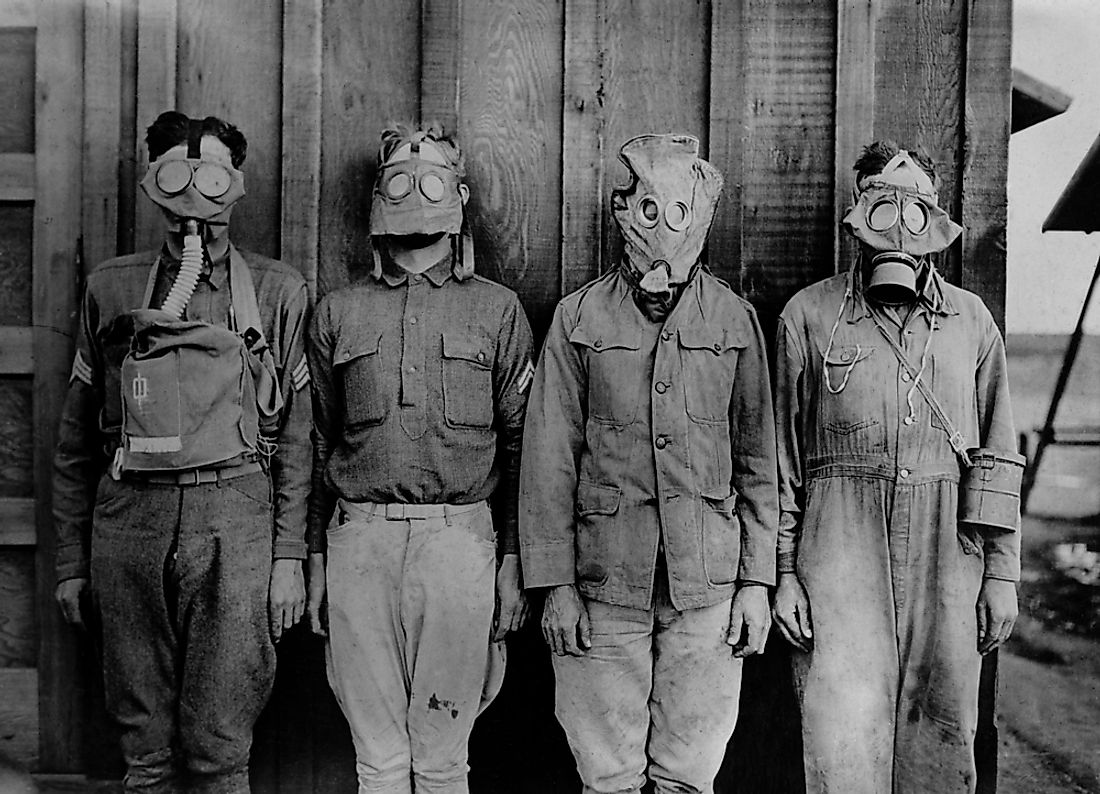Who Invented the Gas Mask?

The gas mask is an invention developed to protect individuals from toxins and poisonous substances that are in the air. Gas masks usually cover the mouth and the nose to protect the individual from airborne hazards, however, most gas masks now safeguard vulnerable tissues such as the eyes. Gas masks have evolved to protect the wearer from both gaseous and particulate toxins. Gas masks are fitted with filters each made to protect against a different toxin or group of toxins. Gas masks do not offer protection from corrosive gas which requires the user to wear protective clothing.
History of the Gas Mask
The Ancient Greeks were the first civilization to utilize gas mask; they made use of the properties of the ordinary sponge as a primitive gas mask. In Persia, the Banu Musa brothers developed a primitive gas mask in the 9th century, and its primary purpose was to offer protection to people working in polluted wells. Alexander von Humboldt, a Prussian mining engineer, developed a primitive respirator to assist miners working in deep mines.
Lewis P. Haslett, an American engineer, created a device in 1847 that resembled modern-day gas masks. He was the first person in the US to receive a patent for a gas mask. His invention worked through the use of a bulb-shaped filter to sieve dust from the inhaled air. The device also had a vent through which air was released back to the atmosphere. John Stenhouse, a Scottish chemist, constructed early versions of the device following Haslett's design.
In 1914, Garrett Morgan patented his 1912 invention, the Safety Hood and Smoke Protector, a device which allowed the user to breathe clean air along the floor and had moist sponges to improve the quality of inhaled air. His invention paved the way for the creation of gas masks used during the First World War.
Gas Masks in World War I
When the Germans used poisonous gas in 1915, the gas masks became an essential component of the war. Immediately after the use of the gas, the Allied forces made use of cotton wool to protect them from the gas. John Scott Haldane improved on the filter used by the Allied troops at the time to develop the Black Veil Respirator. Cluny MacPherson enhanced Haldane's device. Since animals were commonly used during the First World War, gas masks were also designed to protect dogs and horses.
Present Day Gas Masks
The US Army Chemical Warfare Service worked to develop the modern gas masks. They improved on the design used during the First World War and made it more comfortable for individuals to wear it. Due to the development of various weapons particularly biological and chemical weapons, multiple improvements are added continuously to the gas mask.
Civilian Use of Gas Masks
Governments around the world ensured that their citizens were adequately trained in the use of gas masks. Posters and radio lectures were a standard method through which adults learned how to use gas masks. Children were taught how to use gas masks in school through drills. In some schools, it was mandatory for students to carry gas masks and they would be required to wear them during their day to day activities.











